How To Plant Legume Seeds: Step-by-Step Guide for Optimal Growth
- February 22, 2024
- 1 comment
Legumes, a family of plants that includes beans, peas, lentils, and peanuts, are not only nutritious but also beneficial for soil health. They are known for their ability to fix nitrogen, thus enriching the soil. Planting legume seeds can be a rewarding experience, whether you’re a home gardener or a commercial farmer. This guide will walk you through the process of planting legume seeds, ensuring a healthy and bountiful harvest.

| Benefit | Description |
|---|---|
| Nutritional Value | Legumes are a great source of protein, fiber, vitamins (like B vitamins), and minerals (such as iron, magnesium, and potassium). |
| Heart Health | The high fiber content in legumes can help lower cholesterol levels, reducing the risk of heart disease. |
| Weight Management | Being rich in fiber and protein, legumes can promote a feeling of fullness, aiding in weight management and reducing overeating. |
| Blood Sugar Control | Legumes have a low glycemic index, which helps in managing blood sugar levels, beneficial for individuals with diabetes. |
| Digestive Health | The fiber in legumes supports digestive health and can prevent constipation. |
| Environmental Benefits | Legumes improve soil fertility by fixing nitrogen, reducing the need for synthetic fertilizers in farming. |
| Economic Advantage | They are often less expensive compared to animal protein sources, making them an economical choice for protein. |
| Versatility in Cuisine | Legumes can be used in a variety of dishes, from soups and stews to salads and main courses, offering culinary diversity. |
| Gluten-Free | Legumes are naturally gluten-free, making them a great protein source for those with gluten sensitivities or celiac disease. |
| Sustainable Food Source | They require less water and energy to produce than animal proteins, making them a more sustainable food choice. |
Choosing the Right Seeds
Select High-Quality, Disease-Free Seeds
- Quality Assurance: High-quality seeds have a higher germination rate, ensuring more of your planted seeds sprout. Look for seeds from reputable suppliers or garden centers.
- Disease Resistance: Disease-free seeds reduce the risk of infections in your garden. Many suppliers test seeds for common pathogens and label them as disease-free.
- Check for Viability: Older seeds may have lower germination rates. Check the packaging date and choose the freshest seeds available.
Consider the Climate and Soil Type of Your Area When Choosing the Variety
- Climate Suitability: Different legume varieties have varying climate preferences. Some thrive in cooler temperatures, while others need more warmth. Choose a variety that matches your local climate conditions.
- Soil Adaptation: While legumes generally prefer well-draining soil with neutral pH, some varieties might be more adaptable to your local soil conditions, be it clay, sandy, or loamy soil.
- Growing Season: Consider the length of your growing season. Some legumes mature faster and are more suitable for areas with a short growing season.
Opt for Heirloom or Organic Seeds If You Prefer a More Natural Approach
- Heirloom Seeds: These are varieties that have been passed down over generations. They are not genetically modified and are known for their rich flavors and diverse characteristics. Heirloom seeds can often adapt to local growing conditions over time.
- Organic Seeds: Organic seeds come from plants that have been grown without synthetic fertilizers or pesticides. They are ideal for organic gardening practices and can be more resilient to pests and diseases in organic soil conditions.
- Supporting Biodiversity: By choosing heirloom and organic seeds, gardeners support genetic diversity in plant species, which is vital for sustainable agriculture.
Preparing the Soil
Understanding Soil Requirements for Legumes
- Legumes prefer well-drained soil with a neutral pH, typically around 6.0 to 7.0. Well-drained soil is crucial because it prevents waterlogging, which can cause root rot and other diseases in legumes. A neutral pH ensures that the nutrients in the soil are available to the legume plants for optimal growth.
The Importance of Conducting a Soil Test
- A soil test is vital before planting legumes. It provides essential information about the soil’s pH level, nutrient content, and composition. This knowledge allows you to make informed decisions about soil amendments. Testing kits are available at gardening centers, or you can get a professional test done by an agricultural extension service.
Amending the Soil
- Based on the soil test results, you may need to amend your soil. If your soil is too acidic (low pH), adding lime can help raise the pH. For alkaline soils (high pH), sulfur or aluminum sulfate can help lower the pH. Incorporating organic matter like compost is crucial, as it improves soil structure, drainage, and nutrient content. Compost also adds beneficial microorganisms that aid plant growth.
Avoiding Nitrogen-Rich Fertilizers
- Legumes have a unique ability to fix atmospheric nitrogen into the soil through a symbiotic relationship with Rhizobia bacteria in their root nodules. Because of this, they don’t require nitrogen-rich fertilizers. In fact, excessive nitrogen can inhibit the formation of these nodules, reducing the plant’s ability to fix nitrogen.Instead of nitrogen-heavy fertilizers, consider using a balanced, low-nitrogen fertilizer or bone meal, which is high in phosphorus, to encourage strong root development.
Sowing the Seeds
Understanding the Last Frost Date
- The last frost date is the average date of the last spring frost in your area. This date is crucial for planting legumes as frost can damage or kill the seeds or young plants.
- You can find the last frost date by checking local agricultural extension services or weather websites specific to your region.
- Planting after this date ensures that the soil is warm enough for the seeds to germinate properly.
Seed Depth and Size
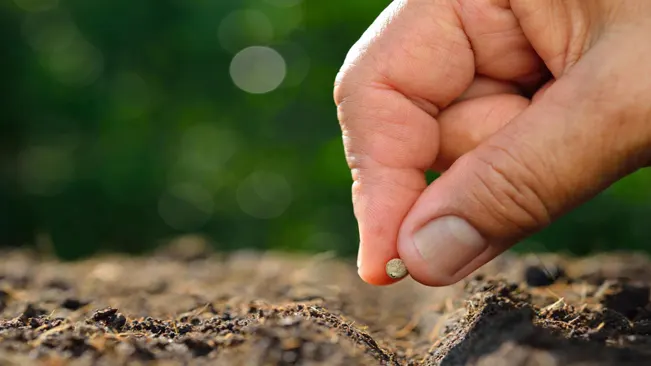
- The rule of thumb is to plant a seed at a depth approximately two to three times its diameter. This means larger seeds like beans are planted deeper than smaller seeds like lentils.
- Planting at the correct depth is vital for proper germination. Too shallow, and the seeds may not root well or may dry out. Too deep, and they might not have enough energy to reach the surface.
Spacing the Seeds
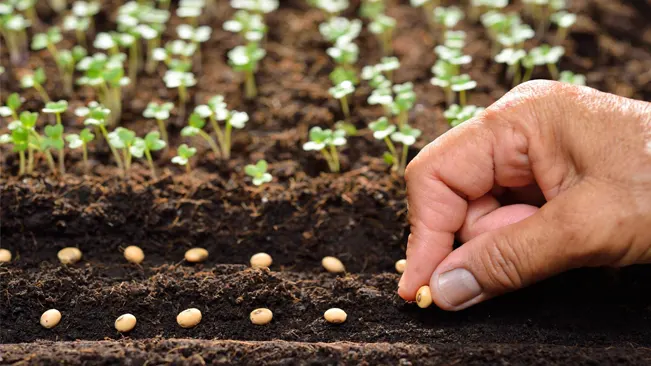
- Proper spacing is essential for several reasons. It ensures each plant has enough room to grow, receive sunlight, and obtain nutrients from the soil.
- Close spacing can lead to overcrowding, which increases the risk of disease and reduces air circulation.
- The spacing varies with the type of legume. For example, bush beans might be planted closer together than pole beans, which need more space to spread.
Row Planting
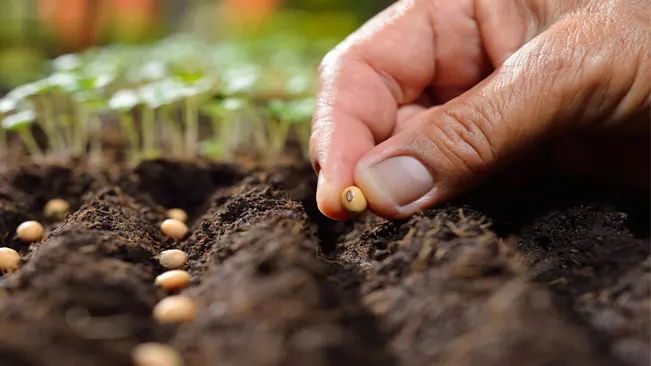
- Planting in rows helps in managing the garden, making watering, weeding, and harvesting more manageable.
- The distance between rows should be enough to allow you to walk or kneel for maintenance, generally about 18-24 inches apart.
Watering and Mulching
Watering
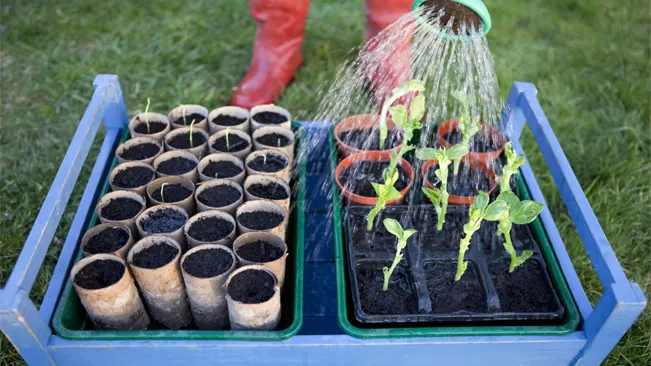
- Gently and thoroughly water legume seeds after planting to ensure good seed-to-soil contact for germination.
- Use a gentle shower head or low-pressure hose to avoid disturbing the seeds. Keep the soil consistently moist but not soaked to prevent root rot or fungal diseases.
- Regularly check that the top inch of soil is moist, especially in dry conditions.
Mulching
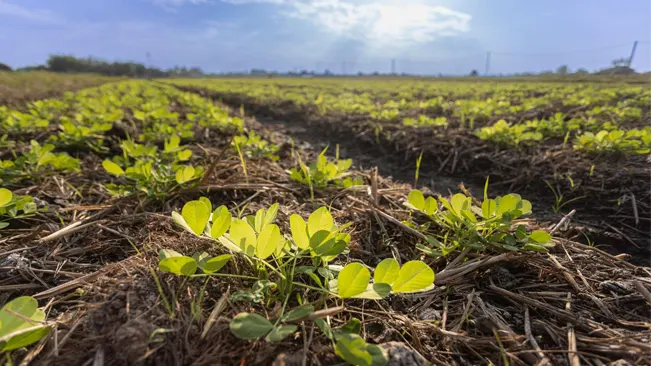
- Apply a 2-3 inch layer of mulch around plants, avoiding the base to prevent stem rot.
- Mulch after seeds have germinated and plants are a few inches tall.
- Watch for pests like slugs in mulched areas.
Managing Pests and Diseases
Rotate Crops Each Year to Prevent Disease Buildup
- Crop rotation involves changing the type of crop grown in a particular area of land each season or year. This practice is essential in managing soil-borne diseases and pests.
- Many pests and diseases are specific to certain plant families. By rotating crops, you disrupt the life cycles of these pests and diseases, reducing their chances of survival.
- For example, if you plant legumes in one area this year, next year you might plant a crop from a different family, such as brassicas (cabbage, broccoli, etc.) or solanaceae (tomatoes, peppers).
- Crop rotation also helps in maintaining soil health and fertility.
Use Organic Pesticides or Natural Methods for Pest Control
- Organic pesticides are made from natural ingredients and are generally considered safer for the environment and beneficial insects compared to synthetic pesticides.
- Examples include neem oil, insecticidal soaps, and diatomaceous earth, which can be effective against a variety of pests.
- Natural methods also include introducing beneficial insects like ladybugs or lacewings, which prey on harmful pests.
- Another method is to use physical barriers like row covers to protect the plants from pests.
- It’s important to correctly identify the pest or disease before treatment to ensure the correct method and product are used.
Regularly Check for Signs of Disease and Act Promptly if Any are Spotted
- Regular monitoring of your legume plants is vital for early detection of pests and diseases.
- Look for common signs like discoloration, spots on leaves, stunted growth, or visible insects.
- Early detection is crucial because it’s easier to manage a small problem than a full-blown infestation or disease outbreak.
- If you detect signs of disease, remove and destroy affected plant parts to prevent further spread.
- In some cases, you may need to remove the entire plant to protect the rest of your crop.
Supporting the Plants
Many legumes, notably peas and runner beans, are climbing plants that require support to grow effectively and healthily. Providing adequate support for these plants is essential for maximizing their growth and yield. Here’s how you can do it:
Choosing the Right Support
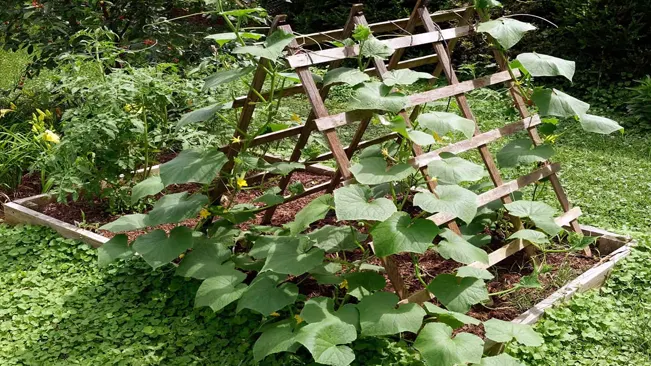
- Trellises: These are ideal for peas and beans. Trellises can be made from various materials like wood, metal, or plastic. They should be sturdy enough to hold the weight of the plants as they grow.
- Stakes: Wooden or metal stakes are another option. They are driven into the ground near the plant, and the plant is trained to climb up the stake.
Benefits of Supporting Legumes
- Supports keep the plants off the ground, reducing the risk of soil-borne diseases and pests.
- It makes harvesting easier and more efficient.
- Proper support can increase air circulation around the plant, reducing the likelihood of fungal diseases.
Harvesting Legumes
Understanding the Harvest Time
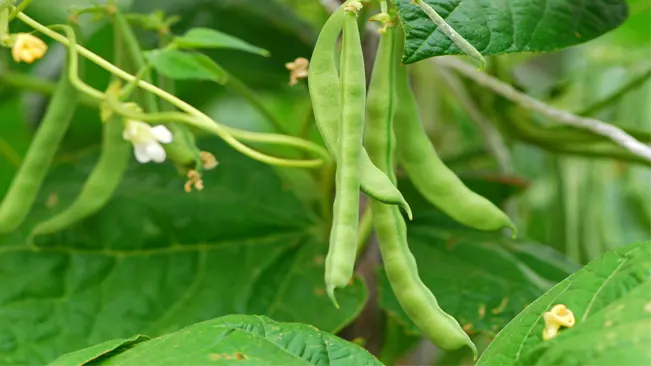
- Variety-Dependent: The right time to harvest legumes varies significantly depending on the type of legume you are growing. For example, peas are typically ready earlier in the season compared to beans.
- Monitoring Growth: Keep a close eye on your plants. Signs of readiness for harvest can change within a few days, especially in warm weather.
Harvesting Peas and Beans
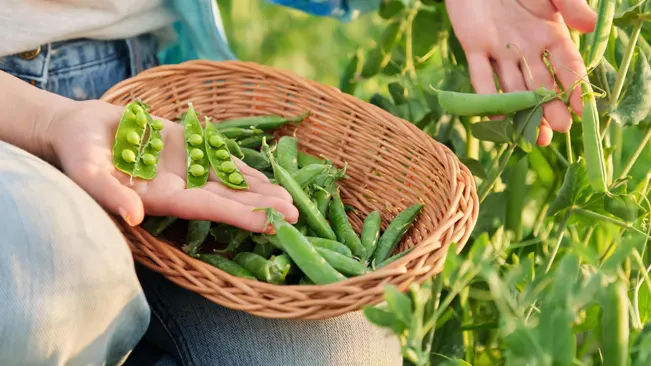
- Tenderness is Key: For peas and beans eaten fresh (like snap beans or garden peas), the best time to harvest is when the pods are plump but the seeds inside are still tender. Overripe pods can become tough and lose flavor.
- Regular Picking: Regular harvesting can encourage the plants to produce more pods. For peas, this is usually every 1-3 days once they start to mature.
- Gentle Handling: When picking peas and beans, be gentle to avoid damaging the plant. Use one hand to hold the vine and the other to pick the pod.
Harvesting Dried Beans and Lentils
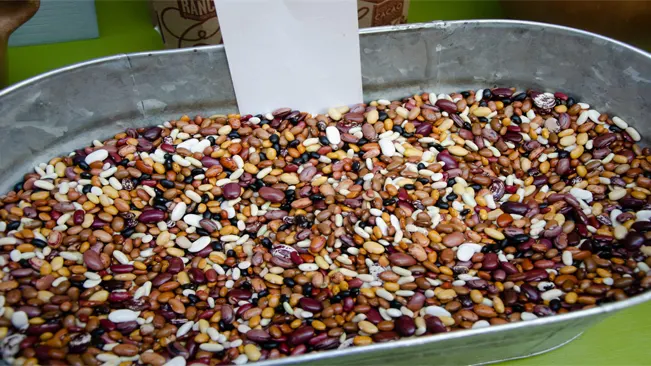
- Wait for Drying: For varieties that are meant to be dried (like pinto beans, black beans, or lentils), the harvest time is later. You should wait until the pods and the seeds within have dried out completely. The pods will typically turn brown, and you’ll be able to hear the seeds rattle inside when shaken.
- Dry Weather Harvesting: Try to choose a dry, sunny day for harvesting dried beans and lentils. This helps to avoid mold and makes the drying process more efficient.
- Drying Process: After harvesting, if the seeds are not fully dried, you may need to lay them out in a warm, airy space for further drying. This is important to prevent mold during storage.
- Shelling: Once the pods are dry, they can be shelled. This can be done by hand or with the help of a mechanical sheller for larger quantities.
Conclusion
Planting legume seeds is a simple yet fulfilling process. By following these steps, you can enjoy a healthy crop of legumes while contributing positively to your garden’s ecosystem. Remember, patience and care are key to a successful legume garden.
FAQs (Frequently Asked Questions)
- What are the best conditions for planting legume seeds?
Legume seeds thrive in well-drained soil with a neutral pH, and they prefer a sunny location. Planting should be done after the last frost date in your area. - How deep should I plant legume seeds?
Generally, legume seeds should be planted at a depth of 1-2 inches, depending on the size of the seed. - Do I need to soak legume seeds before planting?
Soaking seeds overnight can speed up germination, especially for larger seeds like beans, but it’s not mandatory for all legumes. - How far apart should I space legume seeds?
Spacing depends on the variety. Typically, seeds should be spaced 2-4 inches apart in rows. - Do legumes need a lot of water?
Legumes need consistent moisture, especially during flowering and pod development. However, over-watering can cause root rot, so the soil should be kept moist but not waterlogged. - Do I need to fertilize my legume plants?
Legumes generally don’t require nitrogen fertilizers since they fix their own nitrogen. However, a balanced, low-nitrogen fertilizer can be beneficial at planting time. - How do I support climbing legume varieties?
Varieties like peas and runner beans need support. Use trellises, stakes, or netting to help them grow upwards. - When should legume seeds be planted?
The best time to plant legume seeds is in spring, after the last frost date for your area, when the soil has warmed up. - How do I protect legumes from pests and diseases?
Crop rotation, proper spacing, and keeping the area weed-free can help prevent issues. If pests or diseases occur, use organic pesticides or natural methods for control. - When are legumes ready to harvest?
Harvest times vary by species. For fresh eating, harvest when pods are plump but still tender. For dried legumes like beans and lentils, wait until the pods are dry.
With these steps in mind, you’re all set to successfully plant and nurture your legume seeds. Enjoy your gardening journey and the abundant growth that follows!

Kristine Moore
Forestry AuthorI'm Kristine Moore, a seasoned garden landscaping professional with over 30 years of experience. My extensive career has been dedicated to transforming outdoor spaces into stunning, sustainable landscapes. With a deep understanding of horticulture, design principles, and environmental stewardship, I have become a respected figure in the field, known for creating harmonious, visually appealing, and eco-friendly gardens. My commitment to excellence and continuous learning in landscaping trends and techniques has solidified my reputation as an expert in garden design and implementation.

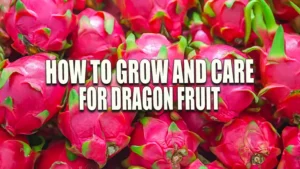
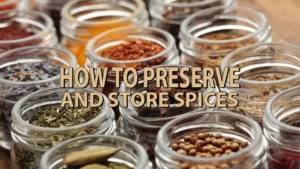
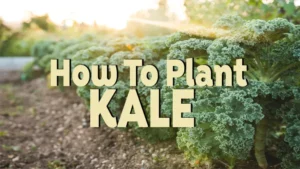
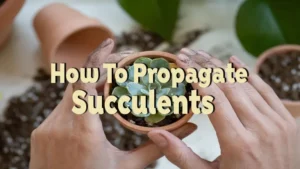


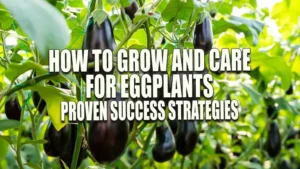

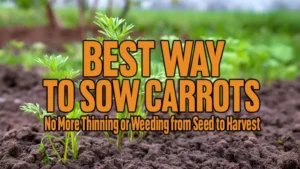
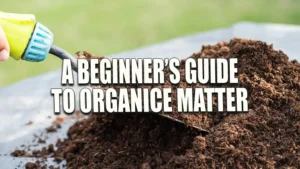


If I want to increase the harvest in legumes, should I aim at higher seed count in pods? What other factors have bearing on production.
Rodney Galarneau
July 22, 2024 1:40 am